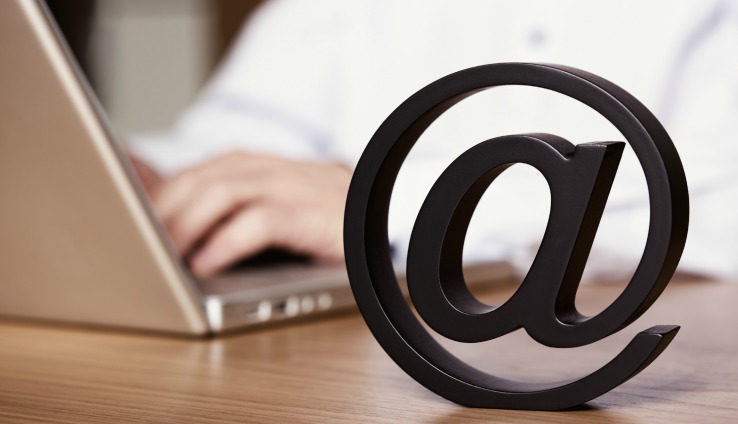Email marketing can be one of the most effective ways to connect directly with your audience. Having people “opt-in” to your email list, you’re assured to reach people who WANT to hear from you. This is usually a very small yet extremely highly qualified pool of potential customers and influencers.
So how can you integrate email marketing into your business and marketing strategies? What are some of the rules and best practices you should follow? Hopefully this short guide will help!
Rule #1: Differentiate Between Business Emails and Marketing Emails
Business Emails
If you’re communicating one-on-one with customers, even if it’s in response to a quote request or some other automated function, these are not marketing emails. These are considered “business” emails. In 99% of cases, the email recipient will have initiated the email conversation by reaching out to you first. Business emails can be conducted without much fuss, and are directed at one single recipient—or a very small group of recipients—at a time.
Marketing Emails
Marketing emails, on the other hand, are usually blasted to a large audience who are on a list owned by the business. These recipients must have given consent to be placed on this list, and understand that they will be receiving regular communications from that business. Since marketing emails are sent to a broader audience in a less personal way, they are held to a much higher standard to protect the recipient. This guide will focus on marketing emails.

Rule #2: Use an Email Service Provider (ESP)
I’m sure you have an email address (possibly more than one) for your business. These are usually “info@yourdomain.com” or “yourname@yourdomain.com” and will be used for all your business emails.
Many small businesses make the mistake of using the same address to send their marketing emails. They will simply write out their marketing email in Outlook or Thunderbird, maybe even attach a well-designed PDF newsletter, add all the email addresses from their list into the “BCC” field, and send the email to their entire list.
This is probably the #1 greatest mistake you can make when starting out in email marketing!
Why? Because it only takes a few people to click on the “SPAM” button upon receiving that email before all your emails (business ones included) start going directly to EVERYONE’s “Junk” folders.
In order to ensure this doesn’t happen to you, there are countless services out there built exclusively to help you send out marketing emails. These are called Email Service Providers, or ESPs. They will help keep your email list clean, and will ensure that your emails conform to most email best practices.
They will also allow recipients to “unsubscribe” from your list, which is a far better solution than those users marking your emails as spam!
If your marketing emails do happen to be marked as spam and start ending up in people’s junk folders… your business emails (from your own business account) won’t be affected, as long as you use an ESP.
The benefits of an ESP
In addition to protecting your business emails, an ESP will help you design appealing marketing emails. Most ESPs provide multiple templates that can be customized for your business, without having to mess around with the code yourself.
You’ll also get some amazing metrics from an ESP that you won’t get with your regular email software. After sending out a marketing email, you’ll be able to track how many people opened the email, clicked on a link, which links were most successful, etc. This can help you gauge what type of content is most appealing to your recipients.
Rule #3: Don’t Be Sneaky About Opt-Ins
In order to build your email marketing list, you’ll ask users to “opt-in” to that list at some point. For most businesses, this is a simple “sign up for our newsletter” form on their website. Others will have an opt-in as part of other forms. (i.e. “Fill out this form to receive a quote, and check this box if you’d also like to receive our newsletter”).
However you choose to do it, make sure it’s crystal clear to people what they’re opting into and why they should care. Don’t use sneaky methods to grow your email list. They’ll come back to bite you. Many businesses are obsessed about the size of their email list and not about the quality of the email recipients.
Think of it this way: There’s no point in emailing someone who has no need for your services and no intention of ever becoming a customer. These are the recipients who are most likely to mark your emails as Spam, which is something you don’t want to happen. You want people on that list who WANT to hear from you.
So, while you want to make it easy for people to join your email list, you want them to be informed about it as well.

Rule #4: Keep your Lists Clean
After sending marketing emails, you’ll probably get a few automated replies of incorrect or invalid email addresses. These are called “hard bounces”. Make it a point to delete these names and addresses off your list. They’re worth nothing.
Going back to rule #3, you want your email list to contain email recipients who WANT to hear from you. It’s not a bad idea to conduct a more thorough cleaning of your lists, at least once a year. Here’s how:
If you’re using an ESP (please, please use an ESP!!!) then you’ll have information on who’s opened and/or clicked on every marketing email you’ve ever sent through that ESP. Periodically, you’ll want to take everyone who hasn’t so much as opened an email from you in the past 6-12 months, and send them a one-time email asking them if they really DO want to hear from you. These are called “re-confirmation” emails. A recipient needs to 1) Open the email and 2) Click on the link you provide in order to confirm that they want to continue receiving your emails. If they don’t, then they’re permanently removed from your list.
This type of regular list maintenance ensures you keep your list to a targeted, qualified group.
Rule #5: It’s All About the Content
We’ve discussed this many times before: People don’t like to be “sold to”… especially not by service businesses. When someone opts-in to your newsletter list, it’s because they believe they’ll receive something useful out of your emails.
When we talked about how to write a blog, we discussed the importance of useful content. When I say “useful content”, I mean useful for the READER, not for YOU! Many businesses send out marketing emails that talk about nothing but themselves, instead of talking to their audience.
What’s in it for ME?
That’s what readers will be asking themselves the second they see your email. They might even ask that question in order to decide whether your email is worth opening!
So be sure your emails feature content that your audience wants to read about. Next, convey that message through a punchy subject line that will encourage them to open the email.

Don’t overdo it
It’s easy to stuff content into emails. Try not to. Your email should have one clear focus or “top story”, and can have two or three secondary messages that are less important… but try not to go much beyond that. A reader will likely only take a single action with each email. If you have two important messages competing for first place, both messages will suffer.
Rule #6: Be Consistent
Be consistent with your timing
Set an email schedule and stick to it. If you decide to email your list once a month, then make sure you have enough content every month to send out an email. Same goes if you email bi-weekly, weekly or even daily! With any luck, once you’ve built up a solid marketing list, those recipients will come to expect to receive your emails at a certain time. Don’t disappoint them!
Note: That having been said, there’s nothing wrong with sending out “one-off” emails once in a while if you have a special announcement or some piece of content you know your audience will want to see right away.
Be consistent with your design
Choose one design for your marketing emails and try to stick to it. Recipients will come to recognize your brand by your email’s design, and will become familiar with how to best navigate your emails. Take your time to select a design that’s unique, user-friendly and useful for the type of content you’ll be emailing!
Be consistent with your writing style
Marketing emails should be written in short sections that are easy to navigate. Don’t send out emails that feature long paragraphs of text unless you’re 100% certain that it’s what your audience wants (hint: there’s almost always a better way)!
Just like when you’re building your website, you’ll want to use headers, bullet points, and images to separate your email content and make it manageable for the 90% of users who will simply “scan read” it.
What’s more, choose one style of writing and stick to it. I’ve seen emails that start off in a formal 3rd person voice, to move on to a 1st person conversational tone, then go back to a third completely different voice, and so on. It’s very confusing to the reader, and gives the impression that the sender used multiple copywriters who didn’t bother communicating with each other.
Rule #7: Testing is not a Dirty Word
Some business owners are terrified of testing their marketing collateral. Generally those are the ones who don’t like to learn they’ve been doing something wrong (and would simply prefer continue making the same mistakes in perpetuity).
Please don’t be that person.
While you do want to be consistent, there’s nothing wrong with testing varying subject lines, email themes, times of day, etc. when sending your emails.
In fact, most good ESPs will have that function built into your interface. When you build your email, you’ll be able to tell the ESP what you want to test and enter a few parameters, then the program will select a random sample size out of your email list, send them the test variables, and send the winning email to the remaining members of the list.
Testing in this fashion can be incredibly useful to learn more about what your audience likes, what they’re indifferent to and, above all, what works for your business.

Rule #8: Follow the Rules
Emailing is a great way to raise your bottom line. Just be aware that in certain countries or jurisdictions, there maybe be legal requirements you must follow to send marketing emails without being fined.
Regulations can relate to how you obtain email addresses, to what information must be made available to recipients in every message, to the type of content you are or aren’t allowed to send in a marketing message. These regulations might apply to you even if your business is not located within the boundaries of the jurisdiction. For example, if one of your email recipients resides in that area or even if you simply have an email server located in that area, you may have to follow that jurisdiction’s laws.
Be informed about what you can and can’t do with your marketing emails. Luckily, most of these laws and regulations simply force businesses to conform to the best practices mentioned in this article!
I hope this guide has helped answer some questions you might have about email marketing, and you now feel more comfortable trying it for your business! With strong content and a good ESP at your side, you have a recipe to succeed.
It might take a while to build that list, so give it time and don’t give up!
